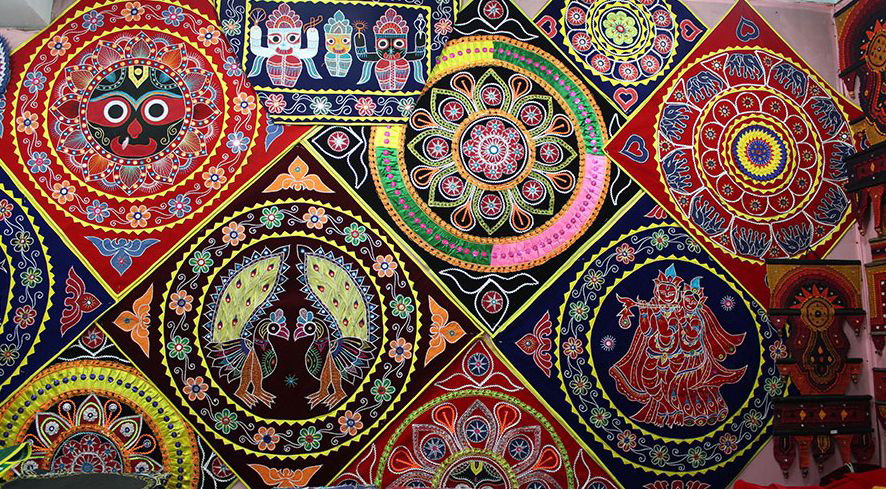Pipili\pipli town, puri District, Odisha is known for its applique work which is also known as Chandua. Applique is the version of the French word appliquer, which means “to put on”.
Pipili’s work is related to Lord Jagannath, during the 12th-century umbrellas and canopies were prepared for the Rath yatra of Jagannath by the Gajapatis are from applique work.
History
There is interesting mythology of how applique came in Puri and, ultimately, Pipli. The story tells, how Emperor Badshah, of what might have been Delhi, ordered a darji or professional tailor to create two pillows. The darji finished the first and found his creation to be so wonderful that he thought them only befitting for use by Lord Jagannath. When the darji returned the next morning to complete his handiwork, one of the pillows was found to be missing. Upon knowing this, Badshah imprisoned the darji for the crime of stealing. However, that night, Lord Jagannath came to Badshah in his dreams to tell him that it was he who transported the pillow to Puri.
The darji was released the following day. After he had finished the remaining pillow, he traveled to Pipli where he educated the art of applique to those of his people.Thus, only the most skilled artisans were chosen to produce the excellent arts for Lord Jagannath.
Design and making process
The craft involves embroidering and stitching for affixing the pieces of cloth the makers use a straight stitch, satin stitch, blind stitch, or buttonhole including Mirror work is also done occasionally and many other beautiful stitches.
The main figures are mythical and natural which includes peacocks, ducks, parrots, trees, elephants, creepers, flowers such as lotus and jasmine, the sun, half-moon, and Rahu few of them.
There is motifs which include limited number of colors used in the traditional applique craft. There are green, red, blue, yellow, and black. There are also few creativity of craftsmen. however, there are various combinations of motifs as well in the mixing of these limited colors.
Products
Similarly, with the changing times, the craft has also adapted itself to the needs of modern consumers. Among the more popular applique items are garden umbrellas, a variant of chhati with wooden or aluminum stands, shoulder bags, wall hangings, lampshades, bed covers, letter pouches, chuni and many more commodities used in combination with handicrafts to produce composite products. Unlike many other handicrafts, appliques items are attractive artifacts of daily use apart from being decorative arts they are comparatively lower in cost.
Present perspective
In accumulating threat to the age-old traditional knowledge of the country, the stakeholders of the product have facilitated IPR protection of pipili applique craft. The product has since been registered under the Geographical Indication ( GI ) Act of India in 2008.
Nonetheless, converting IPR protection of the product to opportunities for stakeholders, there is a need to explore the brand value of the product through market linkage.
Though the commodity has a domestic market in the country and is exported to a few numbers of countries. The artisans by and large remain economically poor. The reason is the lack of a larger market.
At present, there are about 15000 artisans in Puri as well khardha districts who depend on the applique craft for their livelihoods.Most of them are women. But, due to the third wave, and the fact that all the melas in the state are banned, the destiny of these craft people is at stake.
Though, the government is chalking out a plan to help the craftsmen. Joint chief executive officer of the government run Odisha Rural Development and marketing Society.









Comments
Post a Comment